
 |
Publications on Cold War Radio History |
|
National Academy of Engineering Memorial Tributes Volume 20 (2016)H. Richard JohnsonDick Johnson partnered with Dean Watkins to form Watkins-Johnson in 1957. WJ was immediately profitable as a designer and manufacturer of microwave vacuum tubes, most notably the traveling-wave tube. From TWTs they expanded the business into building ELINT receivers. Looking to diversify, in 1967 they purchased Communications Electronics, Inc of Rockville, MD, which they left mainly intact under CEI founder Ralph Grimm. WJ financed CEI's expansion into the new Gaithersburg building. WJ products from this facility are legendary among many radio enthusiasts and widely regarded as some of the finest communication receivers ever made. Most WJ radios from their west coast facilities were made for classified projects in realtively small quantities and do not have much following among collectors.
|
|
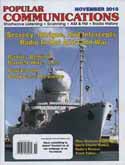 |
Popular Communications - Nov 2010"Hot Radios in The Cold War"The Cold War pushed the boundaries of modern receiver design faster than any other geopolitical event. Three letter agencies parceled out small change to two companies gambling on their engineers to develop the first microprocessor controlled synthesized VHF-UHF radios. Watkins-Johnson won the competition with the WJ-8617 receiver. The WJ-8617 became a highly successful design. It was produced in scores of variations and integrated into many advanced systems. Still in use by many government agencies in many countries and valued by knowledgeable collectors who can handle its complexity. |
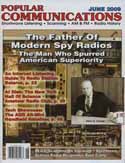 |
Popular Communications - June 2009"The Father of Modern Spy Radios - Allen S. Clarke"Allen Clarke created and marketed the first surveillance receiver, the Nems-Clarke 1306. He built and operated two AM radio stations. He had a hand in numerous successful businesses. His service as a manufacturing engineer on the proximity fuse in WWII earned a presidential citation and several patents, all of which were kept secret for more than 20 years after the war ended. He was a fine engineer and a terrific businessman, yet by the time he passed away, he was virtually unknown. A few years before he died he tried to find a home for his collection of papers and equipment. Some of them were donated to a local high school library, much of it simply disappeared. |
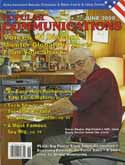 |
Popular Communications - June 2008"The Watergate Rig: The Most Infamous Spy Radio"President Richard M. Nixon was hounded out of office following a misguided effort to bug the Democratic National Headquarters in the Watergate apartments. During the nationally televised Senate Select Hearing on Watergate, an RS-111 radio receiver made by Watkins-Johnson received national attention because it was used to monitor the transmissions from the bugs. The publicity was a mixed blessing for Watkins-Johnson. The expense of complying with the subpoenas and legal requests towered over the price James McCord paid for the radio, but McCord was nice enough to answer the question of where he went to get the radio by replying he went to the best in the business, "Watkins-Johnson". |
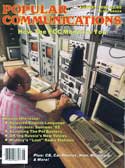 |
Popular Communications - August 1992"Zeroed In! - We Visit An FCC Monitoring Post"At the height of the pirate radio fad, when the HF frequencies around 7 MHz regularly featured unlicensed transmissions, the Federal Communications Commission gave me a tour of their Allegan, Michigan monitoring post. I found an impressive facility and an even more impressive antenna installation. This was my first face-to-face exposure to Watkins-Johnson and Racal equipment in use by a Federal agency. This monitoring post was originally established during WWII for direction-finding on suspected espionage activties. |
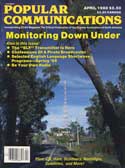 |
Popular Communications - April 1988"The ELF is Here! - We Visit The New E. L. F. Transmitter Site"Near the end of the Cold War, the Navy was pushing hard for an Extremely Low Frequency communication system to reach nuclear submarines at operation depths. Project ELF was a vastly scaled down version of their initial design. It came fully online just before the Berlin Wall fell and the Cold War ended. The system was extremely low efficiency, using 2.3 megawatts to transmitter frequency shift keyed signals at a data rate of 3 characters per 15 minutes. Nevertheless, it continued in operation until 2004, when the Navy mothballed the project. |